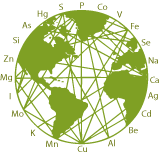Facts
The name is derived from 'Ruthenia', the Latin name for Russia. Ruthenium is a hard, brittle, gray-white metal belonging to the platinum group of metals. It is a rare transition metal, generally found in ores with other platinum group metals in the Ural Mountains and in North and South America.
Ruthenium is utilized in various fields, including electronics, catalysis, and medicine, due to its unique properties such as high resistance to wear and corrosion. Most is used in the electronics industry. Ruthenium oxide is used in the chemical industry to coat the anodes of electrochemical cells for chlorine production. Ruthenium is also used in catalysts for ammonia and acetic acid production. Ruthenium compounds can be used in solar cells, which turn light energy into electrical energy.
Ruthenium is one of the most effective hardeners for platinum and palladium, and is alloyed with these metals to make electrical contacts for severe wear resistance. It is used in some jewellery as an alloy with platinum. Ruthenium tetraoxide (RuO4), like osmium tetraoxide, is highly toxic and explosive.
Ruthenium has no biological function. It causes skin spots and accumulates in bones. It is possibly carcinogenic.
